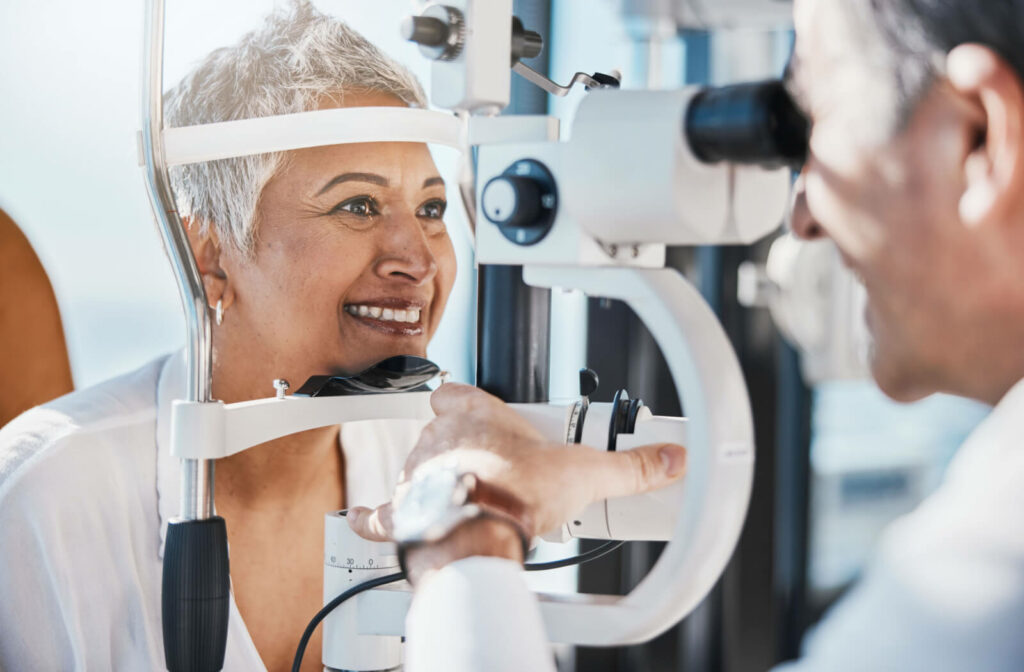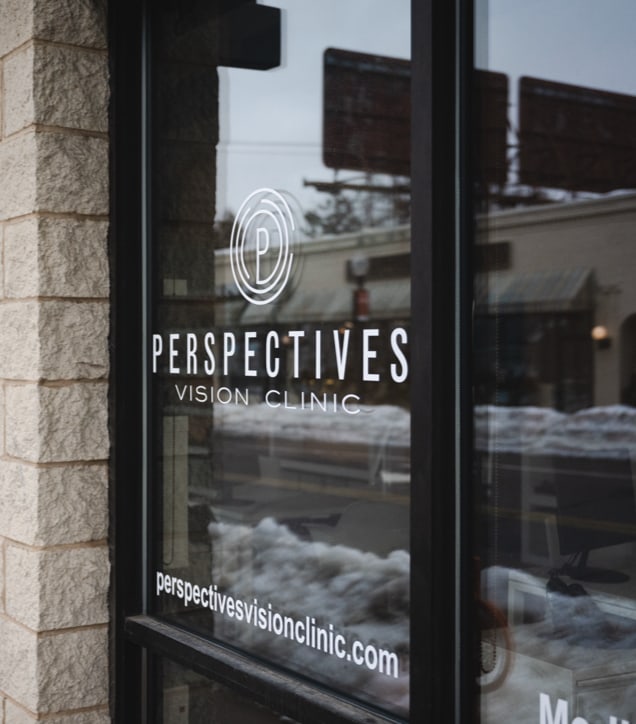You should schedule a comprehensive eye exam at least every 2 years. With an eye exam, your optometrist can thoroughly check in on your eye health and vision. But what diseases are they actually looking for?
During a routine eye exam, an optometrist will look for refractive errors like nearsightedness or farsightedness.
Comprehensive eye exams can also detect signs of:
- Dry eye disease
- Glaucoma
- Diabetes
- High blood pressure
- Sjörgen’s syndrome
Refractive Errors
If you’ve ever had an eye exam, you’ve likely been tested for refractive errors. Refractive errors make it difficult to see clearly at different distances.
There are several of these that your eye doctor will look for:
- Myopia (nearsightedness)
- Hyperopia (farsightedness)
- Astigmatism
- Presbyopia
While a refractive error is not technically a disease, they are incredibly common and are often the first things an optometrist will look for.
Dry Eye Disease
Dry eye disease is a condition that affects millions of Americans. This condition, caused by a problem with your tear production, leads to a burning, dry, or gritty sensation in the eyes.
Fortunately, it’s also considered highly treatable. Your optometrist will ask questions about how your eyes feel, and look for underlying causes of dry eye before recommending a treatment plan.
Glaucoma
Glaucoma, often referred to as the “silent thief of sight,” is an eye condition that can develop as you get older. This is a group of eye conditions often characterized by the buildup of internal pressure in the eye.
Over time, this pressure can damage the optic nerve. If left untreated or undiagnosed, glaucoma can eventually lead to partial—or total—vision loss. In the earlier stages, this condition rarely shows symptoms, making it essential to visit your optometrist for a comprehensive eye exam.
Diabetes
Diabetes can affect many parts of the body, and the eye is certainly included in that. Those with diabetes are at risk of diabetic retinopathy, which causes damage to the blood vessels in the retina.
If you have diabetes, you should regularly schedule diabetic eye exams so your eye doctor can detect potential signs of this disease.
High Blood Pressure
High blood pressure is more common than you think, and fortunately, there’s an easy way for an optometrist to check yours. If you have high blood pressure, your optometrist can detect this during a dilated eye exam.
These blood vessels are minuscule and are extremely sensitive to change. This means that an optometrist will be able to determine whether or not you’re at risk of complications caused by blood pressure simply by examining your eyes.
Sjörgen’s Syndrome
Sjörgen’s syndrome is a condition that causes your immune system to attack healthy parts of your body—like the eyes, mouth, and even your nervous system. When it affects the eyes, this condition attacks the glands that help keep your eyes moisturized and hydrated.
This can lead to dry eyes, or irritation around them. An optometrist will look for relevant symptoms that are often caused by Sjörgen’s syndrome, and may ask if you have other symptoms, like:
- Joint pain
- Rashes
- Aches and muscle fatigue
- Concentration and memory problems
- Breathing troubles
They can then use this information to determine if you may be dealing with Sjörgen’s syndrome.
Thyroid Disease
If your optometrist is worried you may be dealing with thyroid problems or any thyroid-related diseases, there’s an easy way for them to check this during a routine eye exam.
Graves’ disease, one of the more common thyroid problems, causes several symptoms an optometrist can detect:
- Your eyes bulging or protruding further than they should
- Your eyelids may retract, causing you to look wide-eyed
- There may be swelling or inflammation in the area
They may also ask if you’re experiencing double vision, dry eyes, or any noticeable changes to your vision.
Brain Tumors
One of the most serious things that can be detected during an eye exam is a brain tumor. It’s important to note that the eye exam alone won’t allow an optometrist to tell if you have a brain tumor, but there may be symptoms indicating something more serious that can be seen.
If an optometrist is worried that you may have a brain tumor, they’ll recommend you visit a healthcare professional immediately for further testing.
If there’s increased pressure in the skull, it can lead to damage or swelling around the optic nerve. It can change your visual field, or how your brain receives visual information. This can cause:
- Blurry vision
- Double vision
- Random movements from the eyes
- A loss of peripheral vision
- Light sensitivity
An optometrist will look for telltale signs like these, and recommend further medical treatment if they believe you may be experiencing a serious health problem.

Eye Exams in Minneapolis
For adults, comprehensive eye exams are key to detecting and treating eye diseases and other vision concerns before they become more serious.
Book an appointment with our team at Perspectives Vision Clinic in Minneapolis for your next eye exam to get the care you deserve for your vision!










